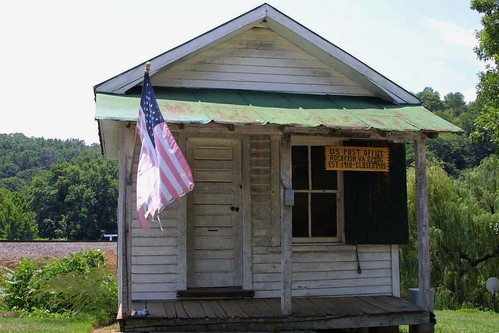Last year, we wrote about Intel’s Digital Villages program, and its first deployment — connecting the isolated, Brazilian island city of Paratins using long-range wireless technology. Since then, Intel has implemented similar programs in Baramati, India and the Guangdong Province in China. Intel chairman, Craig Barrett visits them all (and writes about the trips).
While WiMAX and other long-range wireless solutions are effective in connecting locations throughout remote areas in Brazil (like Paratins), many of these broadband deployments require Internet Protocol over Satellite (IPoS). HughesNet is in Brazil doing just that:
Hughes Network Systems, LLC (Hughes), the world’s leading provider of broadband satellite solutions and services, announced today that its Brazilian operating subsidiary has implemented the region’s first DVB-S2/IPoS satellite hub. HughesNet(R) customers are now being activated on this hub, which is operating with the most efficient implementation of the DVB-S2/IPoS air interface standard including the ACM (Adaptive Coding and Modulation) feature. The DVB-S2/IPoS standard is the world’s leading broadband satellite standard approved by the TIA in North America, and ETSI and ITU in Europe.
Customers will receive higher system availability and greater throughput for a given antenna size as a result of the enhanced system capabilities derived from the DVB-S2/IPoS standard. The new Hughes HN System optimizes link performance, even in networks with geographically diverse locations and in high rain areas, by adjusting error-correcting codes and modulation dynamically based on signal quality feedback from HN remote terminals. The greatly improved Low Density Parity Check (LDPC) error correcting codes, combined with the adaptability features, make the Hughes solution the most efficient DVB-S2/IPoS platform on the market today.
"Our new HN System, based on DVB-S2/IPoS, takes our broadband satellite operation in Brazil to the next level," said Delio Morais, president of Hughes Network Systems Americas. "Along with higher speeds, it means significantly improved bandwidth allocation and operational efficiency." Morais estimates that by year end more than 1,500 customer sites will be receiving HughesNet service through the new DVB-S2/IPoS with ACM hub.
Today, HughesNet completed the rollout of this service in the state of Amazonas, including the installation of more than 200 HN terminals. The state’s board of education is using the capabilities to deliver educational programs for the "On-Site Middle School with Technology Mediation" project:
In early August, the Educational Media Center of Amazonas was opened in Manaus at the State Education Board. Specially trained teachers of different disciplines deliver their classes, which are transmitted in real-time to the Hughes-operated NOC (network operations center) and then broadcast to students in rural communities in 42 municipalities via two-way satellite technology. Organized as an interactive IPTV system, students report to the teachers in Manaus, ask questions, and receive real-time feedback, assisted by 260 on-site teachers. Utilizing the HughesNet two-way satellite service, student-teacher interaction is achieved as though they were physically present at the same location.
Every classroom features a technology kit that includes a Hughes HN broadband satellite terminal, multimedia PC, LCD TV, laser printer, and a special battery in case of power outages.
Morais continued, "The greatest challenge for Hughes was in accessing the rural communities in Amazonas to install the satellite equipment. But it was overshadowed by the importance of bringing education to the teenagers and adults in more than 200 communities in Amazonas who will benefit from this project."
In addition to these government rollouts, there are many local Brazilian resellers already making this HughesNet service available to households and businesses in Brazil.
HughesNet utilization of DVB-S2 industry standards and the Adaptive Coding Modulation (ACM) feature (which we discussed last week), can yield higher throughputs and up to 50% more efficient bandwidth utilization over the DVB-S specification.
HughesNet DCB-S2 standard is leading the way in IPoS but its next generation, SPACEWAY, set to launch North American commercial service in early 2008, will be even more impressive. The main difference:
The IPoS standard is for traditional bent pipe satellites. SPACEWAY is a brand new type of satellite in which the satellite itself is an integral part of the network and therefore the air interface is quite different. However, in HNS’ standardization work, we have continued along the SI-SAP path, facilitating the application and value added service migration from IPoS to SPACEWAY platforms.









 U.S. Naval officer and NASA astronaut
U.S. Naval officer and NASA astronaut